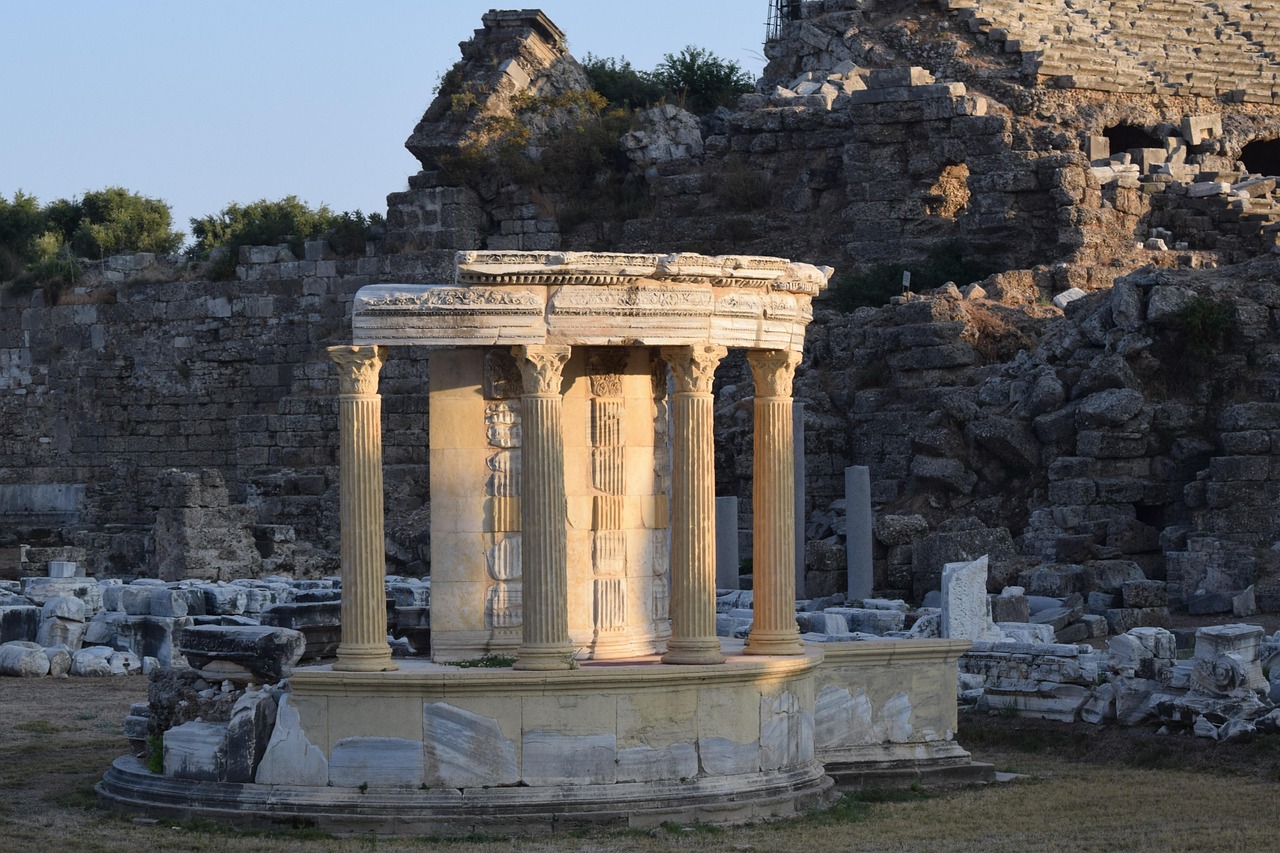Chepstow, Wales: The Ultimate Travel Guide 2025

Chepstow, located in Monmouthshire, is a charming town that serves as the gateway to Wales. Nestled along the banks of the River Wye, it offers breathtaking scenery and a mix of historic and modern attractions. Visitors can explore its bustling high street, filled with independent shops, cafés, and traditional pubs. The town's award-winning redevelopment has enhanced its pedestrian areas, making it a pleasant place to stroll and soak in the atmosphere. Whether you're looking for a relaxing riverside walk or a lively shopping experience, Chepstow provides a perfect blend of both.
Outdoor enthusiasts will find plenty to enjoy in Chepstow, as it sits at the southern end of the Wye Valley, an Area of Outstanding Natural Beauty. The town is a hub for walkers, with several long-distance trails starting here, including the Wye Valley Walk, Offa's Dyke National Trail, and the Wales Coast Path. These routes offer stunning views, winding through forests, hills, and picturesque villages. For those who prefer a more leisurely pace, the Chepstow Racecourse hosts exciting events throughout the year, including the Coral Welsh Grand National, making it a great spot for a day out.
Chepstow also boasts a vibrant cultural scene, with annual events such as the Castell Roc Music Festival bringing live performances to its historic surroundings. The town's Walkers Are Welcome accreditation highlights its commitment to outdoor tourism, ensuring well-maintained paths and welcoming facilities for visitors. Whether you're exploring its scenic landscapes, enjoying a festival, or simply relaxing by the river, Chepstow offers a memorable experience for all types of travelers.
Table of Contents
- History of Chepstow
- Early Settlements in Chepstow
- Roman Influence in Chepstow
- Norman Conquest and Chepstow Castle
- Medieval Growth in Chepstow
- Tudor and Stuart Periods in Chepstow
- Industrial Revolution in Chepstow
- Modern Development in Chepstow
- Best things to do and See in Chepstow
- Chepstow Castle
- Old Wye Bridge
- Caldicot Castle
- Chepstow Port Wall
- Chepstow Riverside
- Chepstow Racecourse
- Wye Valley Walk
- Offa’s Dyke Path
- Lancaut Nature Reserve
- Mathern Mill
- 10 Best Day Trips from Chepstow
- Where to Stay in Chepstow
- Best Time to Visit Chepstow
- Visiting Chepstow in Spring
- Visiting Chepstow in Summer
- Visiting Chepstow in Autumn
- Visiting Chepstow in Winter
- How to get to Chepstow
History of Chepstow
Early Settlements in Chepstow
Chepstow has been inhabited since prehistoric times, with evidence of human activity dating back to the Mesolithic period around 5000 BC. Archaeological discoveries suggest continuous settlement through the Bronze Age and Iron Age, with fortified camps established by the Silures, a Celtic tribe. The area was strategically important due to its proximity to major waterways, making it a hub for early trade and defense.
Roman Influence in Chepstow
During the Roman occupation, Chepstow became a key crossing point between major Roman towns. A bridge or causeway was constructed across the river, facilitating movement between settlements. While no large Roman fort has been discovered, artifacts and burials indicate a Roman presence. The area remained an important trade route, linking Roman Britain’s military and economic centers.
Norman Conquest and Chepstow Castle
Following the Norman Conquest in 1066, Chepstow became a stronghold for Norman expansion. William FitzOsbern, a close ally of William the Conqueror, founded Chepstow Castle in 1067, making it one of the earliest stone castles in Britain. The castle’s Great Tower, built during this period, remains one of the best-preserved examples of Norman military architecture. A Benedictine priory was also established nearby, reinforcing the town’s religious and administrative significance.
Medieval Growth in Chepstow
During the Middle Ages, Chepstow flourished as a market town and port. The town became known for its wine imports, as well as the export of timber and bark from nearby forests. The construction of the Port Wall in the 13th century helped protect the growing settlement. Chepstow’s strategic location made it a center for trade, with merchants and craftsmen contributing to its economic expansion.
Tudor and Stuart Periods in Chepstow
The 16th and 17th centuries saw Chepstow continue to thrive, particularly in shipbuilding and trade. The town played a role in national conflicts, including the English Civil War, when it was occupied by both Royalist and Parliamentary forces at different times. The castle was eventually damaged and abandoned, marking the end of its military significance. Despite this, Chepstow remained an important commercial hub.
Industrial Revolution in Chepstow
The 18th and 19th centuries brought industrial growth to Chepstow, particularly in shipbuilding and engineering. The town became a center for iron production, with local industries supplying materials for bridges and railways. The Wye Tour, a popular scenic route for early tourists, brought visitors to Chepstow, boosting its reputation as a picturesque destination.
Modern Development in Chepstow
In the 20th and 21st centuries, Chepstow evolved into a vibrant town with a mix of historic charm and modern amenities. The racecourse, established in the 1920s, became a major attraction, hosting the Welsh Grand National. Today, Chepstow continues to celebrate its rich heritage through preserved landmarks, cultural events, and tourism, making it a fascinating place to explore.
Visiting Chepstow for the first time and wondering what are the top places to see in the city? In this complete guide, I share the best things to do in Chepstow on the first visit. To help you plan your trip, I have also included an interactive map and practical tips for visiting!
This website uses affiliate links which earn a small commission at no additional cost to you.
Best things to do and See in Chepstow
1. Chepstow Castle
Chepstow Castle is one of the most impressive medieval fortresses in Wales, perched dramatically above the River Wye. Built in 1067, it is the oldest surviving stone castle in Britain, offering breathtaking views and a fascinating history. Visitors can explore its Great Tower, medieval gates, and battlements, learning about its role in defending the Welsh border.
The castle hosts events and reenactments throughout the year, bringing history to life with interactive displays and performances. Whether you’re interested in medieval architecture or simply want to enjoy the stunning scenery, Chepstow Castle is a must-visit.
Opening times: Daily, 10:00 AM – 4:00 PM Entry cost: Adults £6.90, Children £4.80
2. Old Wye Bridge
The Old Wye Bridge is a historic iron bridge that connects Chepstow to Gloucestershire. Built in 1816, it is one of the earliest cast-iron bridges in the world, offering stunning views of the River Wye and surrounding landscapes.
Visitors can walk across the bridge, admiring its elegant arches and watching the dramatic tidal changes of the river below. The bridge is a great spot for photography, especially at sunrise or sunset when the light reflects beautifully off the water.
Opening times: Open all day Entry cost: Free
3. Caldicot Castle
Located just 8 km from Chepstow, Caldicot Castle is a beautifully preserved medieval fortress set within 55 acres of parkland. Originally built by the Normans, the castle was later expanded and used as a royal stronghold. Visitors can explore its medieval towers, walk along the battlements, and enjoy panoramic views of the surrounding countryside.
The castle grounds include woodland trails, picnic areas, and a wildlife pond, making it a great destination for families and nature lovers. Seasonal events such as medieval reenactments and outdoor theatre performances add to the experience.
Opening times: Daily, 11:00 AM – 4:00 PM Entry cost: Free
4. Chepstow Port Wall
The Chepstow Port Wall dates back to the 13th century, built to protect the town from invaders and control trade. The wall originally featured a fortified gate with a portcullis, where merchants had to pay tolls to enter.
Today, visitors can walk along the remaining sections of the wall, admiring its ancient stonework and imagining the bustling medieval town it once enclosed. The site is a fascinating glimpse into Chepstow’s past and a great addition to any historical tour of the area.
Opening times: Open all day Entry cost: Free
5. Chepstow Riverside
Chepstow Riverside offers a scenic walking route along the banks of the River Wye, with stunning views of the castle and surrounding hills. The area is perfect for a relaxing stroll, with benches and picnic spots along the way.
Visitors can enjoy riverside cafés and pubs, offering local food and drinks with picturesque views. The riverside is also a great place to watch the dramatic tidal changes, as the River Wye experiences one of the highest tidal ranges in the world.
Opening times: Open all day Entry cost: Free
6. Chepstow Racecourse
Chepstow Racecourse is one of the most famous horse racing venues in Wales, hosting the Welsh Grand National and other major events throughout the year. The racecourse offers thrilling races, hospitality packages, and family-friendly entertainment, making it a great day out for visitors.
Beyond racing, the venue also hosts concerts, food festivals, and outdoor cinema nights, ensuring there’s always something exciting happening. Whether you’re a racing enthusiast or just looking for a lively atmosphere, Chepstow Racecourse is worth a visit.
Opening times: Varies by event Entry cost: Ticket prices vary
7. Wye Valley Walk
The Wye Valley Walk is a stunning long-distance trail that passes through Chepstow, offering breathtaking views of the Wye Valley Area of Outstanding Natural Beauty. The route takes walkers through woodlands, cliffs, and riverside paths, with plenty of opportunities to spot wildlife and enjoy the peaceful surroundings.
Popular sections near Chepstow include the clifftop viewpoints overlooking the river and the woodland trails leading toward Tintern Abbey. Whether you’re looking for a short scenic walk or a full-day hike, the Wye Valley Walk is a fantastic way to experience the natural beauty of the area.
Opening times: Open all day Entry cost: Free
8. Offa’s Dyke Path
Offa’s Dyke Path is a historic walking trail that follows the ancient earthwork built by King Offa in the 8th century to mark the border between England and Wales. The trail begins in Chepstow and stretches north, offering spectacular views of the surrounding countryside.
Visitors can explore sections of the path near Chepstow, enjoying woodland walks, hilltop panoramas, and historic landmarks along the way. The trail is perfect for hikers and history enthusiasts alike, providing a unique blend of natural beauty and medieval heritage.
Opening times: Open all day Entry cost: Free
9. Lancaut Nature Reserve
Lancaut Nature Reserve is a hidden gem located just 5 km from Chepstow, offering tranquil woodland trails and stunning views of the River Wye. The reserve is home to rare plants, birds, and butterflies, making it a great destination for nature lovers.
Visitors can explore the ruins of St James’ Church, a medieval chapel nestled within the forest, adding a touch of history to the scenic surroundings. The peaceful atmosphere and breathtaking landscapes make Lancaut Nature Reserve a perfect escape from the hustle and bustle of town.
Opening times: Open all day Entry cost: Free
10. Mathern Mill
Mathern Mill is a historic watermill located just 3 km from Chepstow, offering visitors a glimpse into traditional milling techniques. The site features working machinery, interactive exhibits, and guided tours, showcasing the importance of water power in local industry.
The mill is surrounded by beautiful countryside, making it a great spot for a relaxing walk after exploring the exhibits. Seasonal events and workshops provide hands-on experiences, allowing visitors to learn more about the history of milling and rural life in Wales.
Opening times: Varies by season Entry cost: Donations welcome


















